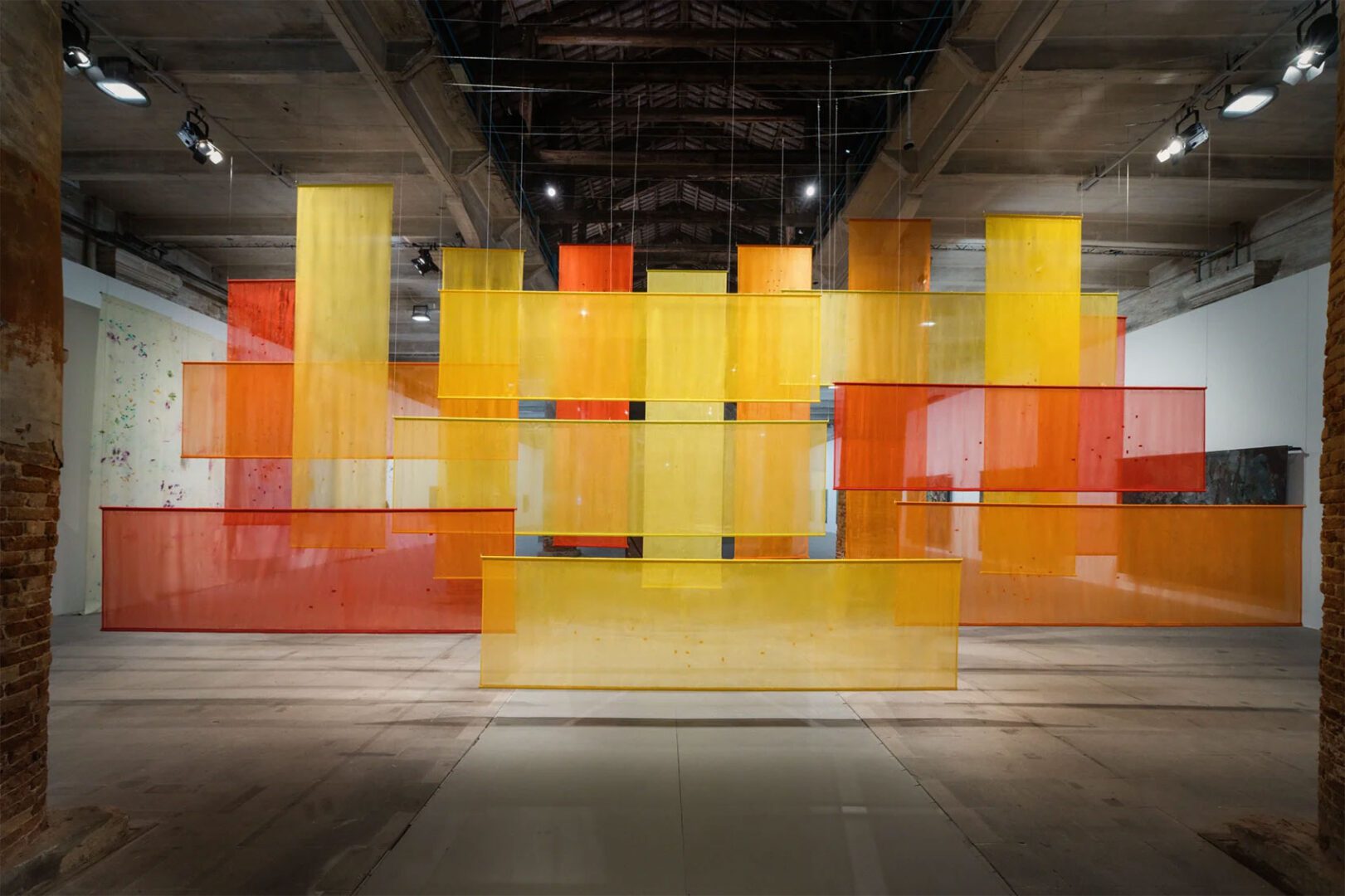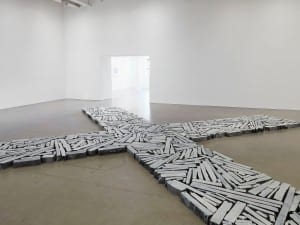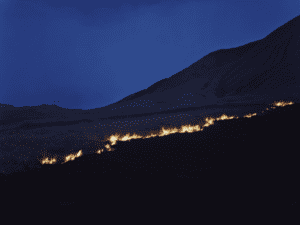This summer, Arnolfini opens Dana Awartani: Standing by the Ruins, a deeply resonant exhibition that brings together new and existing works from the Palestinian-Saudi artist in her first institutional solo presentation in Europe. The show unfolds across media – textiles, film, painting and architectural installation – each piece carefully composed to explore the layered themes of loss, healing and cultural resilience. At the centre of is Standing by the Ruins III (2025), a major new floor installation constructed in collaboration with adobe restoration craftsmen from Riyadh. It draws directly from the historic Hamam al-Sammara, one of Gaza’s oldest bathhouses, now believed to be destroyed. Rebuilt in intricate geometric detail, the piece deliberately omits a final binding agent. The structure stands on the edge of completion and collapse, capturing a moment in time where memory meets material and fragility becomes strength.
Arnolfini continues to lead as one of the UK’s most vital spaces for contemporary art. Since its founding in 1961, the Bristol institution has built a reputation for its bold, interdisciplinary approach to programming. Its exhibitions regularly position urgent global narratives within a local and accessible context, offering space for experimentation, reflection and engagement. Hosting artists such as Paula Rego, Sonia Boyce and Peter Doig, as well as supporting emergent talent from Bristol and beyond, Arnolfini champions complexity and curiosity. Awartani’s exhibition aligns with this legacy, inviting audiences to engage with questions of cultural survival, memory and the aesthetics of care. Shown in parallel with The Other Side of the Mountain by painter Sahara Longe, Standing by the Ruins contributes to a wider conversation at Arnolfini about how personal and collective histories are remembered and reimagined through material practice.
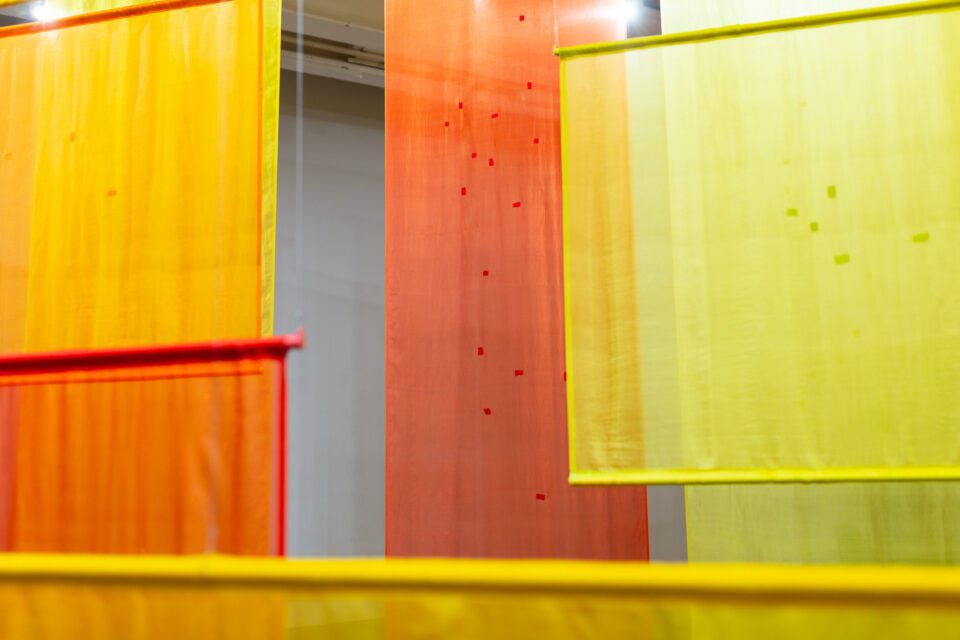
Awartani’s work embraces traditional craft not as nostalgic reference but as a vital strategy for repair and remembrance. In Come, let me heal your wounds. Let me mend your broken bones (2024), naturally dyed silk fabrics are torn and mended using traditional darning techniques, forming a visual archive of destruction and restoration. Each mark on the surface corresponds to a damaged or demolished site across Iraq, Syria and Palestine. These traces are are mapped from research and photographic evidence, carefully translated into material form. Her collaboration with master darners in India is both a gesture of respect for inherited skill and a political act that values slowness, intimacy and touch. The process of dyeing, tearing and mending becomes a quiet, rhythmic choreography of healing and sustained attention.
In I Went Away and Forgot You. A While Ago I Remembered. I Remembered I’d Forgotten You. I Was Dreaming (2017), Awartani presents a one-take film set in Jeddah’s old town, a UNESCO heritage site under threat from redevelopment. The artist sweeps away a floor of coloured sand, a pattern echoing traditional Islamic tile design. As the motif dissolves, the work speaks to the erasure of place, history and belonging under the pressures of modernisation. Below the screen, the physical sand remains present, resting under the viewer’s feet. The installation activates both sight and touch, prompting a sensory awareness of time and disappearance. Drawing its title from Mahmoud Darwish’s Memory for Forgetfulness, the piece captures the tension between remembering and letting go, between permanence and impermanence.
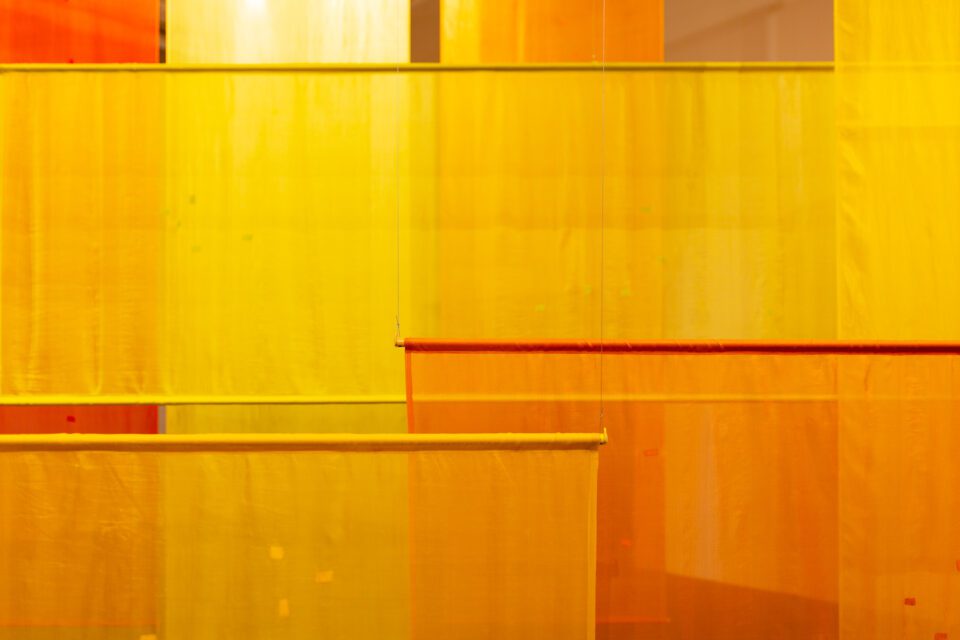
Awartani’s attention to process underscores every work. Her studies at the Prince’s School of Traditional Arts in London, as well as an apprenticeship in manuscript illumination in Istanbul, form the backbone of a practice that values knowledge as something shared, repeated and generational. These disciplines demand patience, precision and humility – qualities that inform her approach to contemporary concerns. Whether drawing with hand-ground pigments or constructing with sun-dried clay, her use of natural materials connects her practice to ecological cycles and to sustainable, ethical production. She does not extract; she listens to what each material can carry and communicates through it. This commitment places her in close conversation with artists such as Otobong Nkanga, who also emphasises the political and emotional weight of materials, and how systems of trade and labour inscribe themselves onto the objects we touch.
Likewise, Wangechi Mutu’s textured and fragmented works offer a second lens through which to consider Awartani’s approach. Mutu reassembles cut paper, organic matter and sculpture into hybrid figures that carry stories of displacement, survival and regeneration. Both artists build worlds from fragments – visual, historical and emotional – and both insist on the beauty that can arise from disruption. Ibrahim Mahama similarly aligns with Awartani in his material intelligence and commitment to collective authorship. His monumental installations made from stitched jute sacks record the movement of goods, people and histories across Ghana and beyond. Like Awartani, Mahama values labour not as metaphor but as method.
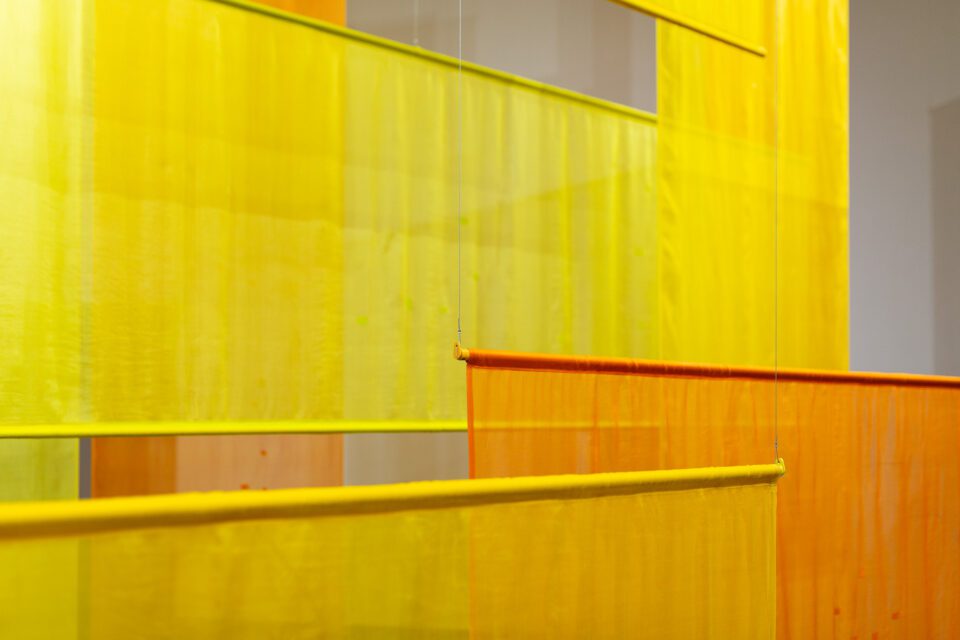
Awartani’s exhibition offers a space for reflection grounded in tactility, rhythm and care. Each installation asks viewers to slow down, notice texture and line, and consider the time embedded in each surface. The themes are expansive – war, displacement, the loss of cultural memory – but the language remains intimate. Geometric patterns, natural dyes and fragile architecture become ways of holding memory in the present tense. These works assert that what has been damaged can be acknowledged and made visible again. Awartani’s contribution to Arnolfini affirms the gallery’s continued commitment to art that thinks deeply and feels precisely, offering audiences an with histories not only through facts, but through form.
Rather than offering resolution, Standing by the ruins invites ongoing engagement. The works do not close a chapter; they keep the questions open. Through sand, silk and earth, Awartani builds an environment where care is an active principle – where mending is a daily practice and where memory is something we participate in, not simply recall. This is art that speaks across time, language and geography, rooted in craft and expanded by intention. Arnolfini is amplifying a global voice that is powerfully reshaping how we understand the role of tradition, the meaning of loss and the possibilities of repair.
Standing by the Ruins is at Arnolfini, Bristol, until 28 September.
Words: Simon Cartwright
Image Credits:
1. Come, let me heal your wounds. Let me mend your broken bones, 2024 by Dana Awartani. © Dana Awartani, courtesy the artist and Lisson Gallery, photographer Samuele Cherubini.
2-4. Dana Awartani, Standing by the ruins, Arnolfini June 2025. Lisa Whiting Photography for Arnolfini. All rights reserved.


